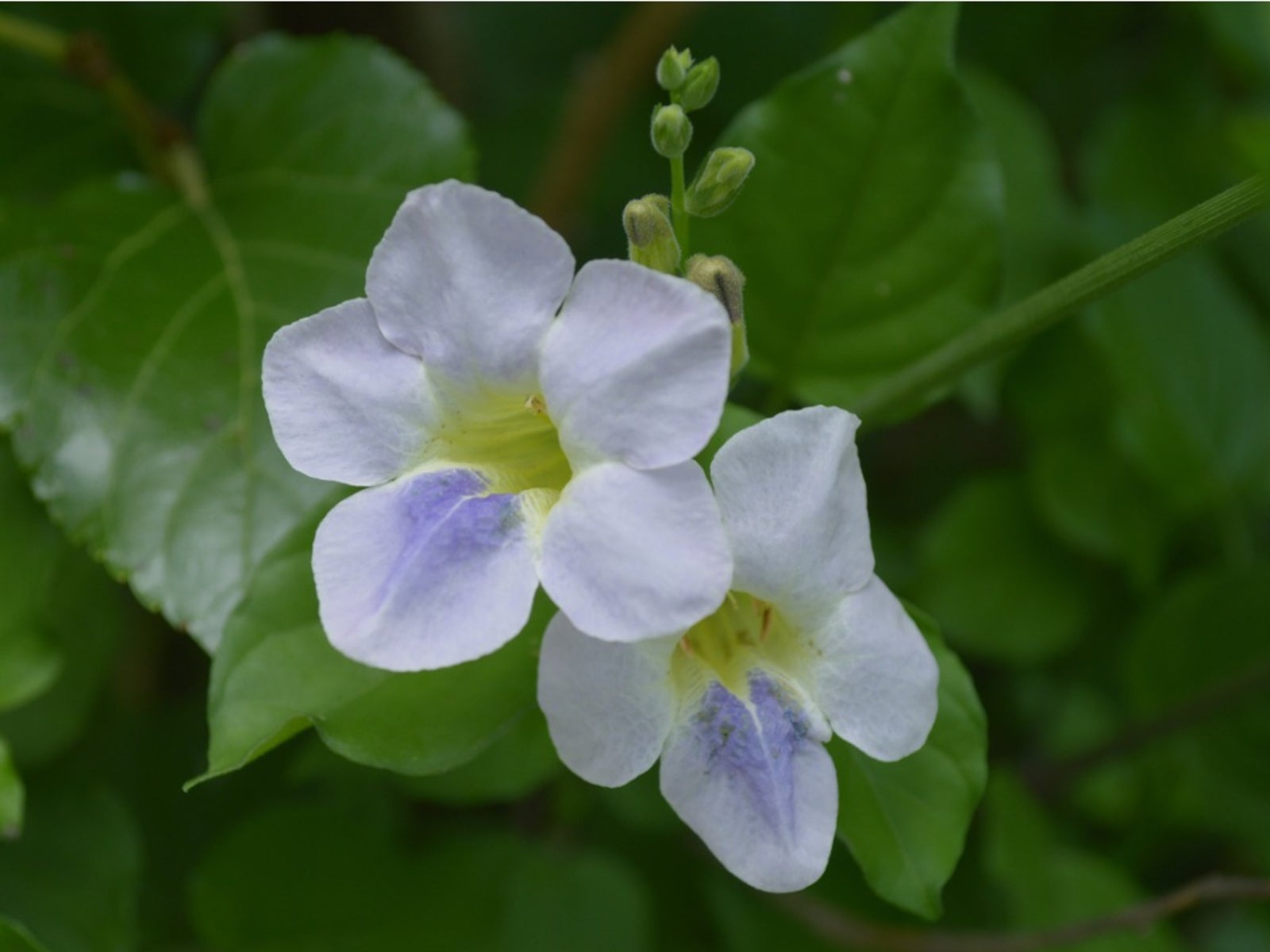Asystasia Chinese Violet Control: Information On Chinese Violet Growing Conditions

Did you know that some plants are so invasive that there are government agencies created specifically to control them? Chinese violet weed is just such a plant and in Australia it is already on the Alert List. Let's learn more about Chinese violet growing conditions and Asystasia Chinese violet control.
What is Chinese Violet Weed?
So what is Chinese violet and how do I recognize it? There are two forms of Chinese violet weeds. The more aggressive form is Asystasia gangetica ssp. micrantha, which features white bell-shaped flowers 2 to 2.5 cm. long, with purple stripes in two parallel lines on the inside and club-shaped seed capsules. It also has opposite leaves having an oval, sometimes nearly triangular, shape that reaches up to 6.5 inches (16.5 cm.) long. Both the leaves and stems have scattered hairs. The less aggressive form is Asystasia gangetica ssp. gangetica, which is very similar but has blue mauve flowers more than 2.5 cm. long. Both subspecies are problem weeds, but currently only the more invasive subspecies Micrantha is on the Australian government's Alert List.
Chinese Violet Growing Conditions
Chinese violet weeds grow in tropical and subtropical areas, being native to India, the Malay Peninsula, and Africa. Plants are thought to tolerate a wide range of soil types and prefer full sun or part shade. However, plants in deep shade do not thrive and become spindly. In addition, those that are found in more exposed sites show some yellowing of the leaves, especially during winter.
Reasons for Eliminating Chinese Violets
What does this mean for me? To gardeners, this means that we mustn't intentionally plant Chinese violet weed in our gardens, and if we find it, then we must contact our local weed control agency. What happens if this weed is allowed to grow? Chinese violet weed grows very rapidly. When its long shoots touch bare earth, the nodes quickly form roots, allowing a new plant to grow in this location. This means that the plant can spread quickly in all directions from the initial location. Once established, the plant forms thick foliage about 20 inches (51 cm.) above ground. The foliage excludes light so that lower growing plants are crowded out and quickly die. This is a serious issue for farmers who may have infestations in their fields. The plant has other effective methods of spreading too. Following flowering, the mature seed pods open explosively, dispersing the seeds over a wide area. The seeds then germinate to make new plants, further adding to the weed problem. The seeds can also lie dormant in the soil waiting for an opportunity to grow. Lastly, if a gardener tries to dig the plant up or cut the stems down, then small fragments of stems can root in the ground to create a new plant. Chinese violet weed grows and proliferates very rapidly through these many methods, which makes it a serious and invasive weed, particularly for farmers.
Asystasia Chinese Violet Control
What do I do if Chinese violets are in my garden? If you think you have found Chinese violet weed, you should contact your local government weed control agency. They will have expertise in Asystasia Chinese violet control, and they will come and check to confirm that the plant is, in fact, Chinese violet. Following identification, they will work with you to control the weed. It is important that you not try eliminating Chinese violets yourself, as this is likely to cause further spread. Additionally, you should not try to dispose of plant parts or seeds yourself, as this is liable to spread the plant to other sites.
Sign up for the Gardening Know How newsletter today and receive a free copy of our e-book "How to Grow Delicious Tomatoes".